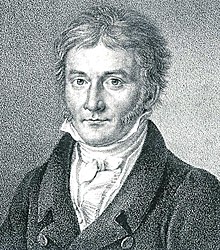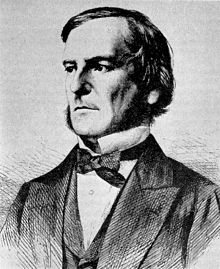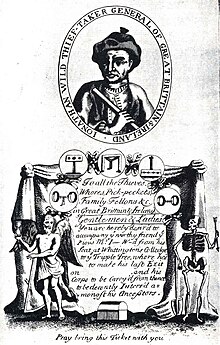Professor Moriarty
| James Moriarty | |
|---|---|
| Sherlock Holmes character | |
 Professor Moriarty, illustration by Sidney Paget which accompanied the original publication of "The Final Problem". | |
| First appearance | "The Final Problem" |
| Created by | Sir Arthur Conan Doyle |
| Portrayed by | various |
| In-universe information | |
| Gender | Male |
| Occupation | Criminal mastermind |
Professor James Moriarty is a fictional character in some of the Sherlock Holmes stories written by Sir Arthur Conan Doyle. Moriarty is a criminal mastermind whom Holmes describes as the "Napoleon of crime". Doyle lifted the phrase from a Scotland Yard inspector who was referring to Adam Worth, a real-life criminal mastermind and one of the individuals upon whom the character of Moriarty was based. The character was introduced primarily as a narrative device to enable Conan Doyle to kill Sherlock Holmes, and only featured in two of the Sherlock Holmes stories. However, in many adaptations, he has been given a greater prominence and treated as Holmes' archenemy.
Appearances in works
Moriarty's first and only appearance occurred in The Adventure of the Final Problem, in which Holmes, on the verge of delivering a fatal blow to Moriarty's criminal ring, is forced to flee to continental Europe to escape Moriarty's retribution. The criminal mastermind follows, and the pursuit ends on top of the Reichenbach Falls, an encounter that apparently ends with both Holmes and Moriarty falling to their deaths. In this story, Moriarty is introduced as a crime lord who protects nearly all of the criminals of England in exchange for their obedience and a share in their profits. Holmes, by his own account, was originally led to Moriarty by his perception that many of the crimes he investigated were not isolated incidents, but instead the machinations of a vast and subtle criminal ring.
Moriarty plays a direct role in only one other Holmes story, The Valley of Fear, set before "The Final Problem" but written afterwards. In The Valley of Fear, Holmes attempts to prevent Moriarty's agents from committing a murder. In an episode in which Moriarty is being interviewed by a policeman, a painting by Jean-Baptiste Greuze is described as hanging on the wall; Holmes remarks on another work by the same painter to show it could not have been purchased on a professor's salary. The work referred to is La jeune fille à l'agneau;[1] some commentators[2] have described this as a pun by Conan Doyle on the Thomas Agnew and Sons art gallery, which had a famous painting[3] stolen by Adam Worth, but were unable to prove the claim.[2]
Holmes mentions Moriarty reminiscently in five other stories: The Adventure of the Empty House (the immediate sequel to The Final Problem), The Adventure of the Norwood Builder, The Adventure of the Missing Three-Quarter, The Adventure of the Illustrious Client, and His Last Bow. More obliquely, a 1908 mystery by Conan Doyle that was named "The Lost Special" features a criminal genius who could be Moriarty and a detective who could be Holmes, although neither is mentioned by name. [citation needed]
Doctor Watson, even when narrating, never meets Moriarty (only getting distant glimpses of him in The Final Problem), and relies upon Holmes to relate accounts of the detective's feud with the criminal. Conan Doyle is inconsistent on Watson's familiarity with Moriarty. In "The Final Problem", Watson tells Holmes he has never heard of Moriarty, while in The Valley of Fear, set earlier on, Watson already knows of him as "the famous scientific criminal".
In The Empty House, Holmes states that Moriarty had commissioned a powerful air gun from a blind German mechanic surnamed von Herder, which was used by Moriarty's employee/acolyte Colonel Moran. It closely resembled a cane, allowing for easy concealment, was capable of firing revolver bullets at long range, and made very little noise when fired, making it ideal for sniping. Moriarty also has a marked preference for organising "accidents". His attempts to kill Holmes include falling masonry and a speeding horse-drawn van. He is also responsible for stage-managing the death of Birdy Edwards.[4]
Personality
Moriarty is extremely intelligent, cunning, calculative and manipulative. He is also ruthless, shown by his steadfast vow to Sherlock Holmes that "if you are clever enough to bring destruction upon me, rest assured that I will do as much to you".[5] Moriarty is categorised by Holmes as an extremely powerful criminal mastermind who is purely adept at committing any atrocity to perfection without losing any sleep on it. It is stated in The Final Problem that Moriarty does not directly participate in the activities he plans, but he only orchestrates the events.
Holmes described Moriarty as follows:
He is a man of good birth and excellent education, endowed by nature with a phenomenal mathematical faculty. At the age of twenty-one he wrote a treatise upon the binomial theorem which has had a European vogue. On the strength of it, he won the mathematical chair at one of our smaller universities, and had, to all appearances, a most brilliant career before him. But the man had hereditary tendencies of the most diabolical kind. A criminal strain ran in his blood, which, instead of being modified, was increased and rendered infinitely more dangerous by his extraordinary mental powers. Dark rumours gathered round him in the University town, and eventually he was compelled to resign his chair and come down to London. He is the Napoleon of crime, Watson. He is the organiser of half that is evil and of nearly all that is undetected in this great city...
— Holmes, "The Final Problem"
Holmes echoes and expounds this sentiment in The Valley of Fear stating:
But in calling Moriarty a criminal you are uttering libel in the eyes of the law—and there lie the glory and the wonder of it! The greatest schemer of all time, the organizer of every devilry, the controlling brain of the underworld, a brain which might have made or marred the destiny of nations—that's the man! But so aloof is he from general suspicion, so immune from criticism, so admirable in his management and self-effacement, that for those very words that you have uttered he could hale you to a court and emerge with your year's pension as a solatium for his wounded character. Is he not the celebrated author of The Dynamics of an Asteroid, a book which ascends to such rarefied heights of pure mathematics that it is said that there was no man in the scientific press capable of criticizing it? Is this a man to traduce? Foulmouthed doctor and slandered professor—such would be your respective roles! That's genius, Watson.
— Holmes, The Valley of Fear
The "smaller university" involved has been claimed to be one of the colleges that later comprised the University of Leeds;[6] but in Sherlock Holmes: The Unauthorized Biography, the "smaller university" is said to be Durham University.[7]
Conan Doyle's original motive in creating Moriarty was evidently his intention to kill Holmes off.[8] "The Final Problem" was intended to be exactly what its title says; Doyle sought to sweeten the pill by letting Holmes go in a blaze of glory, having rid the world of a criminal so powerful and dangerous any further task would be trivial in comparison (as Holmes says in the story itself). Eventually, however, public pressure and financial troubles impelled Doyle to bring Holmes back.[9]
Moriarty's personal history
"Moriarty" is an ancient Irish name[10] as is Moran, the surname of Moriarty's henchman, Sebastian Moran.[11][12] Conan Doyle himself was of Irish Catholic descent, educated at Stonyhurst College, although he abandoned his family's religious tradition, neither marrying nor raising his children in the Catholic faith, nor cleaving to any politics that his ethnic background might presuppose. Doyle is known to have used his former school, Stonyhurst College, as inspiration for details of the Holmes series; among his contemporaries at the school were two boys surnamed Moriarty.[13]
The stories give contradictory indications about Moriarty's family. In his first appearance in "The Final Problem", Moriarty is referred to as "Professor Moriarty" — no forename is mentioned. Watson does, however, refer to the name of another family member when he writes of "the recent letters in which Colonel James Moriarty defends the memory of his brother". In "The Adventure of the Empty House", Holmes refers to Moriarty on one occasion as "Professor James Moriarty". This is the only time Moriarty is given a first name, and oddly, it is the same as that of his purported brother; to wit The Valley of Fear (written after the preceding two stories, but set earlier), Holmes says of Professor Moriarty: "He is unmarried. His younger brother is a station master in the west of England."[14]
Real-world role models

ln addition to the master criminal Adam Worth, there has been much speculation[15] among astronomers and Sherlock Holmes enthusiasts that Doyle based his fictional character Moriarty on the American astronomer Simon Newcomb. Newcomb was revered as a multitalented genius, with a special mastery of mathematics, and he had become internationally famous in the years before Conan Doyle began writing his stories. More to the point, Newcomb had earned a reputation for spite and malice, apparently seeking to destroy the careers and reputations of rival scientists.[16]



Moriarty may have been inspired in part by two real-world mathematicians. If the characterisations of Moriarty's academic papers are reversed, they describe real mathematical events. Carl Friedrich Gauss wrote a famous paper on the dynamics of an asteroid[17] in his early 20s, and was appointed to a chair partly on the strength of this result. Srinivasa Ramanujan wrote about generalisations of the binomial theorem,[18] and earned a reputation as a genius by writing articles that confounded the best extant mathematicians.[19] Gauss's story was well known in Conan Doyle's time, and Ramanujan's story unfolded at Cambridge from early 1913 to mid 1914;[20] The Valley of Fear, which contains the comment about maths so abstruse that no one could criticise it, was published in September 1914. Irish mathematician Des MacHale has suggested George Boole may have been a model for Moriarty.[21]
Jane Stanford, in That Irishman, suggests that Conan Doyle borrowed some of the traits and background of the Fenian John O'Connor Power for his portrayal of Moriarty.[22]
The model which Conan Doyle himself cited (through Sherlock Holmes) in The Valley of Fear is the London arch-criminal of the 18th century, Jonathan Wild. He mentions this when seeking to compare Moriarty to a real-world character that Inspector Alec MacDonald might know, but it is in vain as MacDonald is not so well read as Holmes. It is averred that surviving Jesuit priests at the preparatory school Hodder Place, Stonyhurst, instantly recognised the physical description of Moriarty as that of the Rev. Thomas Kay, SJ, Prefect of Discipline, under whose authority Doyle fell as a wayward pupil. According to this hypothesis, Doyle as a private joke has Inspector MacDonald describe Moriarty: "He'd have made a grand meenister with his thin face and grey hair and his solemn-like way of talking."[23]
Depictions
References
- ^ "Girl With A Lamb".
- ^ a b John Mortimer (24 August 1997). "To Catch a Thief". The New York Times.. A review of THE NAPOLEON OF CRIME — The Life and Times of Adam Worth, Master Thief by Ben Macintyre
- ^ "A portrait of Georgiana Cavendish, Duchess of Devonshire by Thomas Gainsborough".
- ^ Epilogue, The Valley of Fear.
- ^ Doyle, Conan (1894). "The Adventure of the Final Problem". McClure's Magazine. Vol. 2. Astor Place, New York: J.J, Little and Co. p. 104. Retrieved 11 October 2016.
- ^ Bowers, John F., "James Moriarty: A Forgotten Mathematician", 23 December 1989, New Scientist
- ^ Rennison, Nick. Sherlock Holmes: The Unauthorized Biography. p. 68.
- ^ Stashower, Daniel (1999). Teller of Tales: The Life of Arthur Conan Doyle. p. 149. ISBN 978-0805050745.
- ^ Miller, Ron. "Case Book: Doyle vs. Holmes". PBS.
- ^ Daniel Jones; A.C. Gimson (1977). Everyman's English Pronouncing Dictionary (14 ed.). London, UK: J.M. Dent & Sons.
- ^ Moran genealogy site; accessed 28 June 2014.
- ^ Moran profile, irishgathering.ie; accessed 28 June 2014.
- ^ Liukkonen, Petri. "Arthur Conan Doyle". Books and Writers (kirjasto.sci.fi). Finland: Kuusankoski Public Library. Archived from the original on 10 February 2015.
{{cite web}}: Italic or bold markup not allowed in:|website=(help); Unknown parameter|dead-url=ignored (|url-status=suggested) (help) - ^ Sir Arthur Conan Doyle. Sherlock Holmes: The Complete Novels and Stories, Volume 2. Random House., p. 175.
- ^ Schaefer, B. E., 1993, Sherlock Holmes and some astronomical connections, Journal of the British Astronomical Association, vol 103, no. 1, pp. 30–34. For a summary of this point, see this New Scientist article, also from 1993.
- ^ For example, see Newcomb's animosity to the career and works of Charles Peirce.
- ^ Gauss, Carl Friedrich (1809). Theoria motus corporum coelestium in sectionibus conicis solem ambientium. Hamburg, Germany: Friedrich Perthes and I.H. Besser., as described in Donald Teets, Karen Whitehead, 1999 "The Discovery of Ceres: How Gauss Became Famous", Mathematics Magazine, vol 72, no 2 (April 1999), pp. 83–93
- ^ "Ramanujan Psi Sum". Mathworld.wolfram.com. Retrieved 30 January 2011.
- ^ Kanigel, R. (1991). The man who knew infinity: A life of the genius Ramanujan. Scribner. p. 168. ISBN 978-0-671-75061-9.
- ^ See, for example, the book by Kanigel, The Man Who Knew Infinity
- ^ MacHale, Desmond (1995). "George Boole and Sherlock Holmes". The Legacy of George Boole. Cork, Ireland.
{{cite conference}}: Unknown parameter|booktitle=ignored (|book-title=suggested) (help) - ^ Stanford, Jane (2011). That Irishman: The Life and Times of John O'Connor Power. Dublin: The History Press, Ireland. pp. 30, 124–27. ISBN 978-1-84588-698-1.
- ^ The Valley of Fear, The Oxford Sherlock Holmes, p. 181
External links
- America's Best Comics characters
- Fictional characters introduced in 1893
- Fictional crime bosses
- Fictional English people
- Fictional gentleman thieves
- Fictional intellectuals
- Fictional murderers
- Fictional mathematicians
- Fictional professors
- Fictional scientists
- Crime film characters
- Literary villains
- Sherlock Holmes characters
